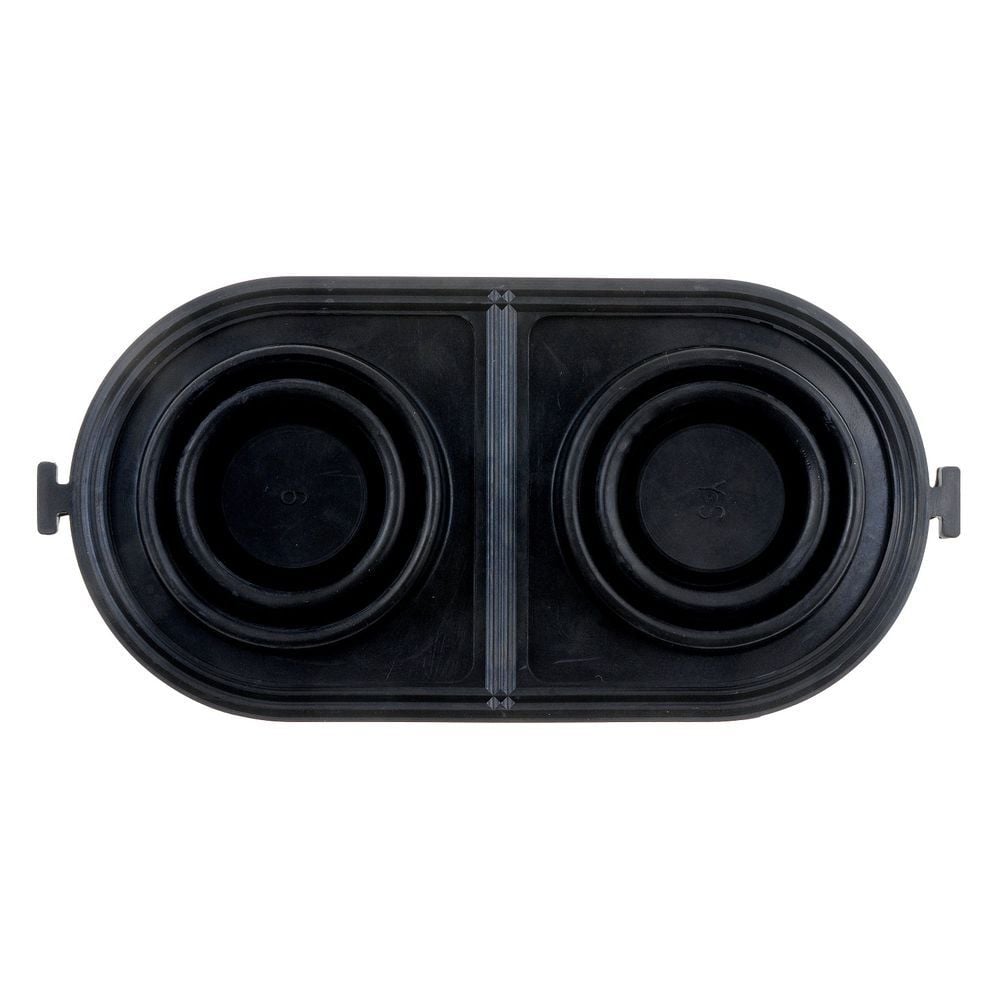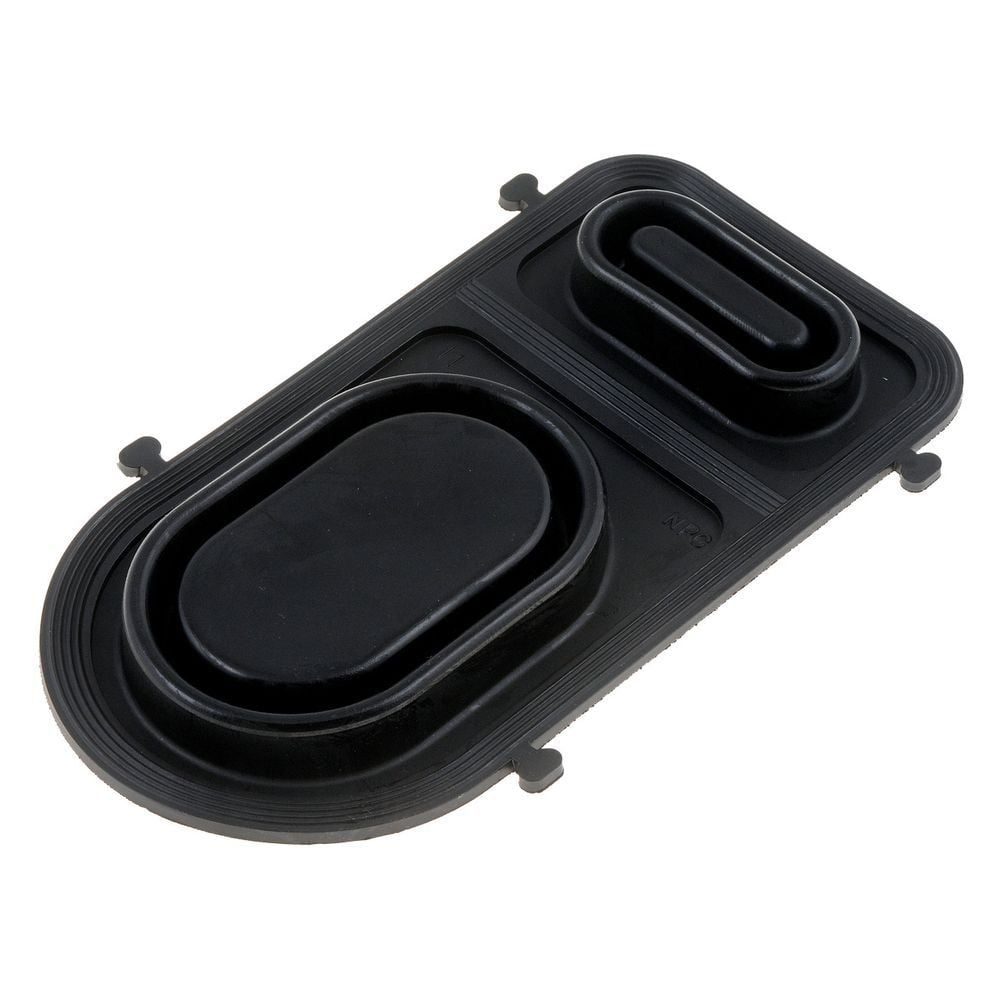DOT Brake Fluid?
#31
Hey Bill, I love your 57 it's a beauty. The DOT5 I used was purple but as I looked at it later it seemed to loose the color and be clear. I wonder if maybe you could dip a drop of fluid out onto a paper plate or something and then see if it will mix with water? That would give you a answer I'll bet. How you coming on your truck?? I got the gas tank I got from you in my truck. Thanks again for that. Greg.
#32
And change your brake fluid regularly. Despite what has been posted above, your master cylinder has to be vented to atmosphere. If it wasn’t, as your pads wear and the fluid level in the reservoir drops, it would draw a vacuum in the reservoir... this atmospheric vent allows moist air into the system which leads to water contamination. This is a drawback to having the master cylinder mounted under the floor boards if your truck ever sees rain or wet roads.
See below pics.


#33
Ok then why does brake fluid turn black in those old systems? All of the newer reservoirs are vented. Why would manufacturers adopt an ‘inferior’ vented system?
I assure that the old style metal cap systems with the diaphragm are splash tight but not water proof or completely airtight.
if you don’t want to change your brake fluid, that’s fine. Please don’t drive behind me or any of my family members in and around Edmonton. I’m sure that none of the DOT 5 fluid manufacturers reccomend that their fluids are suitable for a 30 year service life.
I assure that the old style metal cap systems with the diaphragm are splash tight but not water proof or completely airtight.
if you don’t want to change your brake fluid, that’s fine. Please don’t drive behind me or any of my family members in and around Edmonton. I’m sure that none of the DOT 5 fluid manufacturers reccomend that their fluids are suitable for a 30 year service life.
#34
#35
Ok then why does brake fluid turn black in those old systems? All of the newer reservoirs are vented. Why would manufacturers adopt an ‘inferior’ vented system?
I assure that the old style metal cap systems with the diaphragm are splash tight but not water proof or completely airtight.
if you don’t want to change your brake fluid, that’s fine. Please don’t drive behind me or any of my family members in and around Edmonton. I’m sure that none of the DOT 5 fluid manufacturers reccomend that their fluids are suitable for a 30 year service life.
I assure that the old style metal cap systems with the diaphragm are splash tight but not water proof or completely airtight.
if you don’t want to change your brake fluid, that’s fine. Please don’t drive behind me or any of my family members in and around Edmonton. I’m sure that none of the DOT 5 fluid manufacturers reccomend that their fluids are suitable for a 30 year service life.
Silicon fluid has no go bad date especially the Mil spec stuff that has no scheduled replacement in the maintenance regime it is a life time fill. Conventional brake fluids are only changed due to moisture absorption.
They go black due to due contamination from iron oxides when left extended periods of time. Fluids should never be allowed to get to that state.
#36
Here are 2 styles of vented master cylinders. The first is vented through the cap and from a 1990 F150. The second style has this vent caps on top of the rubber caps, this is from a 1971 Toyota Landcruiser.
#37
On this part we agree. If the system is sealed as you alleged, how does the iron oxidize? If air (containing oxygen) can’t get into the sealed system, where does the O2 in the Fe3O2 (iron III oxide) come from? �� I’m just asking...Anyway, do whatever you think is right...
#38
And the cap is vented in Fords the gasket under the cap is not and has a built in diaphragm. See below. The vents down the inside of the cap can be clearly seen.
This is allow the diaphragm to extend down in to the reservoir and atmosphere to fill the space above the gasket/diaphragm.
This is why in part there is min level far above empty on new plastic master cylinders. As that is volume of air the diaphragm can make up for before excessive vacuum is created in the reservoir and air by passes the gasket. And you better believe that the older units are air tight when the gasket and sealing surfaces are in good condition. That is the intended design when they were engineered..
The systems are designed to be as air tight as possible with out impairing operation. The master cylinder will suck brake fluid and will create a vacuum while doing so but to a limit then air will by pass the reservoirs gasketing. The gaskets seal will not seal against the full force of vacuum that the master cylinder is capable of generating. Again designed to operate this way to insure proper operation is maintained.
With Borate Ester brake fluids sealing the system is not as critical compared to Dot 3 gylcol fluids as the fluid is much much less hygroscopic. And many Dot 4 and Dot 5.1 systems have built in exclusion vents, this is very common on German vehicles
You are assuming that the system is completely anerobic and it is not. The glycol holds oxygen, the space above the fluid in the reservoir has oxygen.
The moisture the gylcol absorbs contains oxygen.
The moisture that is absorbed in the brake fluid is not anaerobic it contains oxygen. Further more glycol absorbs oxygen as it breaks down in contact with H2O. The conditions in the brake system are O2 staved compared to atmosphere but are adequate to produce ferrous oxide (black iron oxide) which forms in oxygen staved environments, in environments with higher oxygen content you will get traditional ferric oxide/hydrated ferric oxide (red iron oxide)
That is why really old brake fluid turns black it is laced with ferrous oxide which also happens to be used as a base for black dyes for things like make up. This also why brake fluid never goes black in plastic/aluminum reservoirs master cylinders as there is no source of iron to create ferrous oxide. But can be black in the slave cylinders.
And it not what I think it is what I know. I may just have some insight on this stuff as I have done engineering work on of some these systems when I was at Ford.

#40
The formation of Iron Oxides is an electrochemical process on the atomic level where the Iron gives up atoms to the O2.
In simple terms as long as there is an electrolyte present (in this case H2O) and O2 Iron oxides will form.
Pressure and temp will only affect the rate of the oxidization process not the occurrence of it.
Thread
Thread Starter
Forum
Replies
Last Post
classyfish
1973 - 1979 F-100 & Larger F-Series Trucks
6
08-08-2002 02:34 AM



